
In the wake of the damaged caused by Hurricane Matthew in Haiti, Marie-Yolaine Eusebe is taking the long view of aid work. Not that she is working with any less haste than other organizations, but the CEO and FireStarter of Community2Community (C2C) looks at the underlying causes of some of Haiti’s most pressing needs after the storm.
“This isn’t an issue of a hurricane,” Eusebe said. “This is an issue of the lack of proper infrastructure.”
The damage of Hurricane Matthew is still being calculated, with the Directorate of Civil Protection of Haiti confirming 546 deaths. Another 2.1 million people were affected by the hurricane, along with 36 destroyed health facilities. But the lack of proper infrastructures made the damage and resulting emergency need even worse, Eusebe said. For example, mudslides are less likely if structures are built to code.
Also, “If there’s clean water, there’s sanitation,” Eusebe said. “These are the things that decrease the rate of typhoid and cholera.”
Stopping the spread of disease is one of the most pressing issues in the country after the hurricane. As of Oct. 25, PANO/WHO estimated 3,423 suspected cholera cases. Cholera is a virus, spread by contaminated water, that severely dehydrates those with the disease. Haiti’s Ministry of Health announced a vaccination campaign starting Nov. 8 to bring 1 million oral vaccines to areas affected by cholera.
Research tied the arrival of typhoid in Haiti to United Nations aid workers arriving from Nepal. The strain of the disease in Haiti originated in Southeast Asia and was first spread throughout Caribbean country from a UN camp in the upper Artibonite River valley after the 2010 earthquake. According to the United Nations, 9,145 people have died from cholera since 2010, with more than 779,000 suspected cases.
Typhoid fever is also spread by contaminated water, as well as food, and severe cases can lead to death. The disease shares many risk factors with cholera, which is why organizations are concerned about its possible rise in Haiti.
The damage caused by Hurricane Matthew allowed cholera, and possibly typhoid, to spread at a faster rate. Haitians were walking through the contaminated water in the street because they had no other choice. Bottled water was available, but some residents who could not afford the bottles were left trying to purify the water, Eusebe said.
While this process that does not always kill off all diseases, often residents had no other choice in order to survive, Eusebe said. “Water is a non-negotiable item.”
C2C, a nonprofit focused on Haitian development, has been working on access to clean water with two communities in Petit-Goâve–a mountainside community of around 16,000 people and a city neighborhood of about 70 families–since 2010. The group partnered with indigenous leadership to build a captage for collecting groundwater and reservoir.
The group is focusing on repairing its water distribution system, as well as a destroyed school, in Petit-Goâve. A needs assessment from those two groups said the hurricane destroyed 40 homes and damaged 140, destroyed two schools and damaged two more, killed 1,621 animals and destroyed 74 acres of garden. None of the captages were destroyed, but 10 were damaged. C2C is raising $645,000 to address the most pressing needs, but maintain its sustainability goals, Eusebe said.
C2C is partnering with the International Black Women’s Public Policy Institute to provide immediate relief for Haitians in the form of boots. The policy organization collected more than 200 pairs of work and rain boots in Los Angeles, Perkins said. C2C will deliver 100 of them to their partners in Haiti on November 13.
Barbara Perkins, president and co-founder, became involved in Haiti after seeing C2C’s long-term impact on the country. IBWPPI was working on the boot collection before Hurricane Matthew because proper footwear allows men, women and children to work in a variety of conditions and seasons. The boots also protect people if they have to walk in contaminated water, which is now a pressing need in Haiti.
IBWPPI will begin advocating policy changes to make boots part of the emergency relief checklist, Perkins said.
“If our cities, our counties and our state are going to help in a disaster, let’s make sure boots are on that list,” she said. “It’s not just charity because it lets everyone work and help themselves, too.”
Perkins said her organization will continue to help Haiti by focusing on economic security and education.
Eusebe said her efforts this year focus on how to prepare Haitians for the next hurricane. International organizations cannot be doing relief every year, she said, because it is not a sustainable system.
“The relief and charity narrative have not worked,” Eusebe said, which is why she advocates for investment in long-term infrastructure solutions and support for indigenous leadership.
“These are the things that are going to help the community move out of this relief narrative,” she said “We need to move out of relief to relieved.”


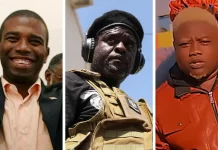


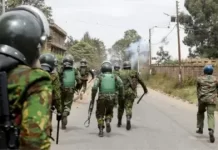

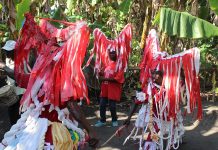
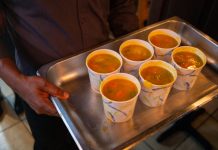

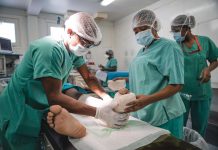
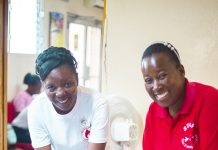
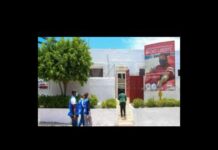
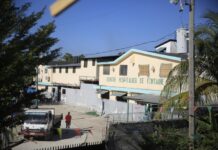















![Phyllisia Ross – KONSA [Official Music Video]](https://haitiville.com/wp-content/uploads/2014/08/phyliisia.jpg)








